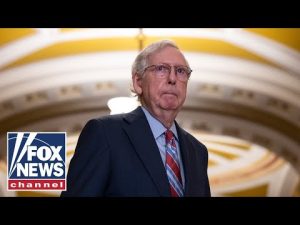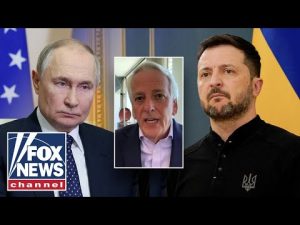In the latest twist of international diplomacy, the ever-elusive quest for peace between Russia and Ukraine seems reminiscent of a soap opera with plot turns nobody saw coming. While Vladimir Putin seems to view world affairs as his personal chessboard, Donald Trump, ever the dealmaker, is trying to bring some semblance of order to the chaos. It’s quite the spectacle as President Trump works hard, applying a mix of carrots and sticks in an effort to bring the two sides to the negotiating table. But as anyone in global politics knows, trying to predict Putin’s next move is like trying to wrangle a cat at a dog show—it’s fraught with unpredictability.
Amidst all the diplomatic jostling, Trump finds himself in the middle of a high-stakes balancing act. While he’s championing unity in Europe, the unpredictability of Putin’s ambitions adds a particularly daunting challenge. Putin seems determined to redefine Europe on his terms, harping back to 2014 when he set his sights on Crimea and a slice of Eastern Ukraine. His ultimate wish list? Controlling Ukraine and shifting the European security order in Russia’s favor. Meanwhile, Trump is pushing to leverage this critical moment, intent on ensuring the alliances on his watch are ready to tackle any threat Putin throws their way.
Interestingly enough, Trump’s approach involves equal parts negotiation whispers and firm nudges. Yet even with the best intentions, pacifying Putin appears to be no small feat due to the Russian leader’s relentless persistence. It’s almost as if Trump has to reinvent the art of negotiation, deploying a classic combination of carrots (the subtle incentives that may appeal to both sides) and sticks (the harsh realities and consequences facing potential aggression). The commentary from a former U.S. ambassador to NATO perfectly captures the widespread sentiment: Putin isn’t interested in peace; he just wants control. Perhaps it’s time to level the playing field with more pressure rather than implementing strategies from the bygone era of appeasement.
In the midst of this geopolitical juggling act, Europe has been called upon to step up its own defense game. President Trump, taking a page from President Truman’s playbook, has been vocal about the need for European nations to bear a greater share of the defense burden. It seems the realization is sinking in across the continent—a strong NATO means not relying solely on Uncle Sam for protection. Building a more European-centric NATO with robust military capabilities could indeed be the masterstroke that solicits a strong deterrent against future Russian provocations.
However, the price of Putin’s ambition continues to rise. The unimaginable cost of war is measured in casualties, economic deprivation, and the corrosion of stability across the geopolitical map. Yet, even as Ukraine bears the brunt and European nations face pressure to hold the line, Putin’s relentless drive persists. As this saga unfolds, perhaps the hope is that reality—not bluster—will compel a shift in strategy. Only time will tell if all these carrots and sticks will eventually be enough to edge closer to lasting peace. But as the world watches this dramatic dance unfold, there’s plenty of room for skepticism—and perhaps a little hope—despite a landscape frequently clouded by rhetoric and unpredictability.







